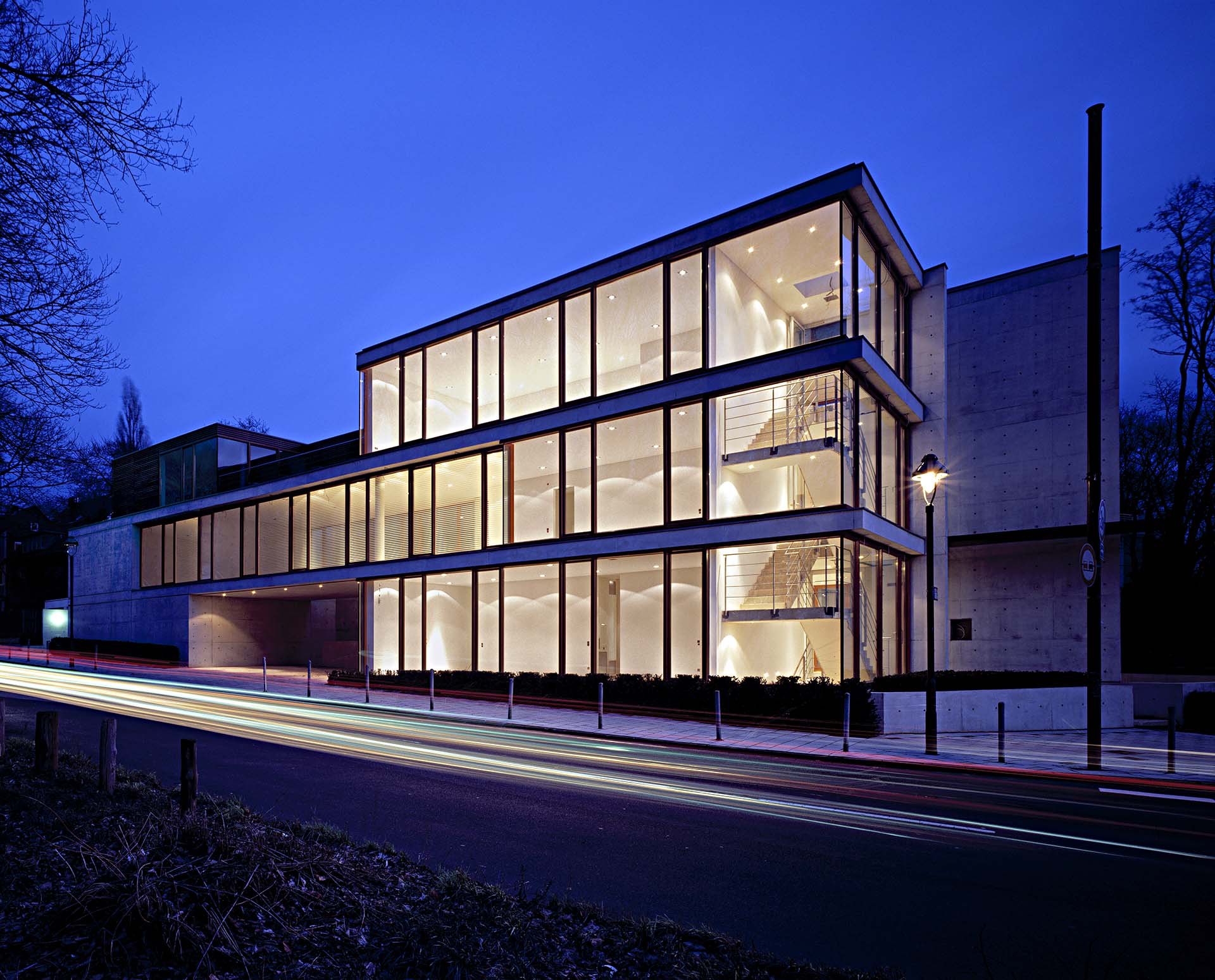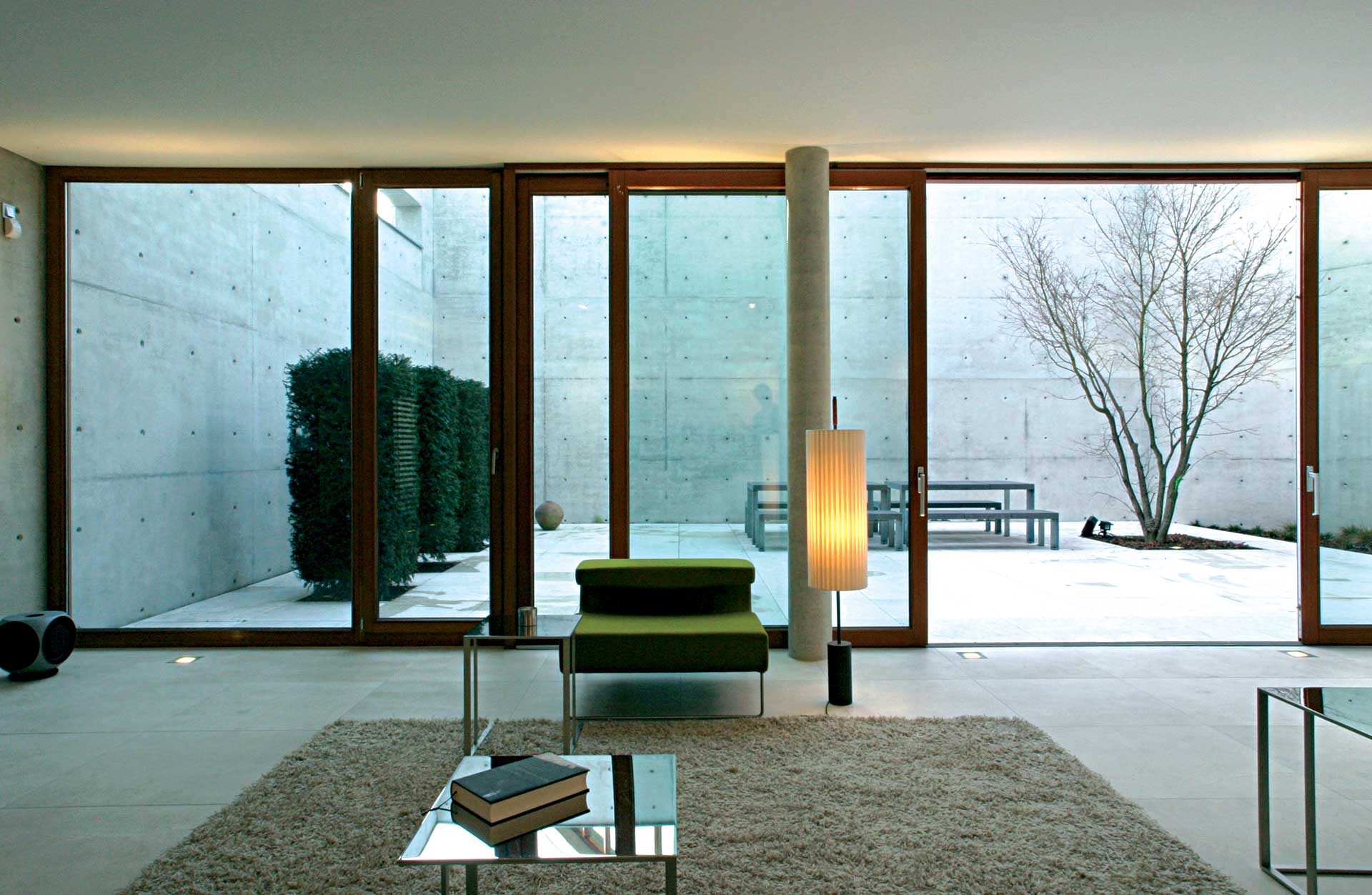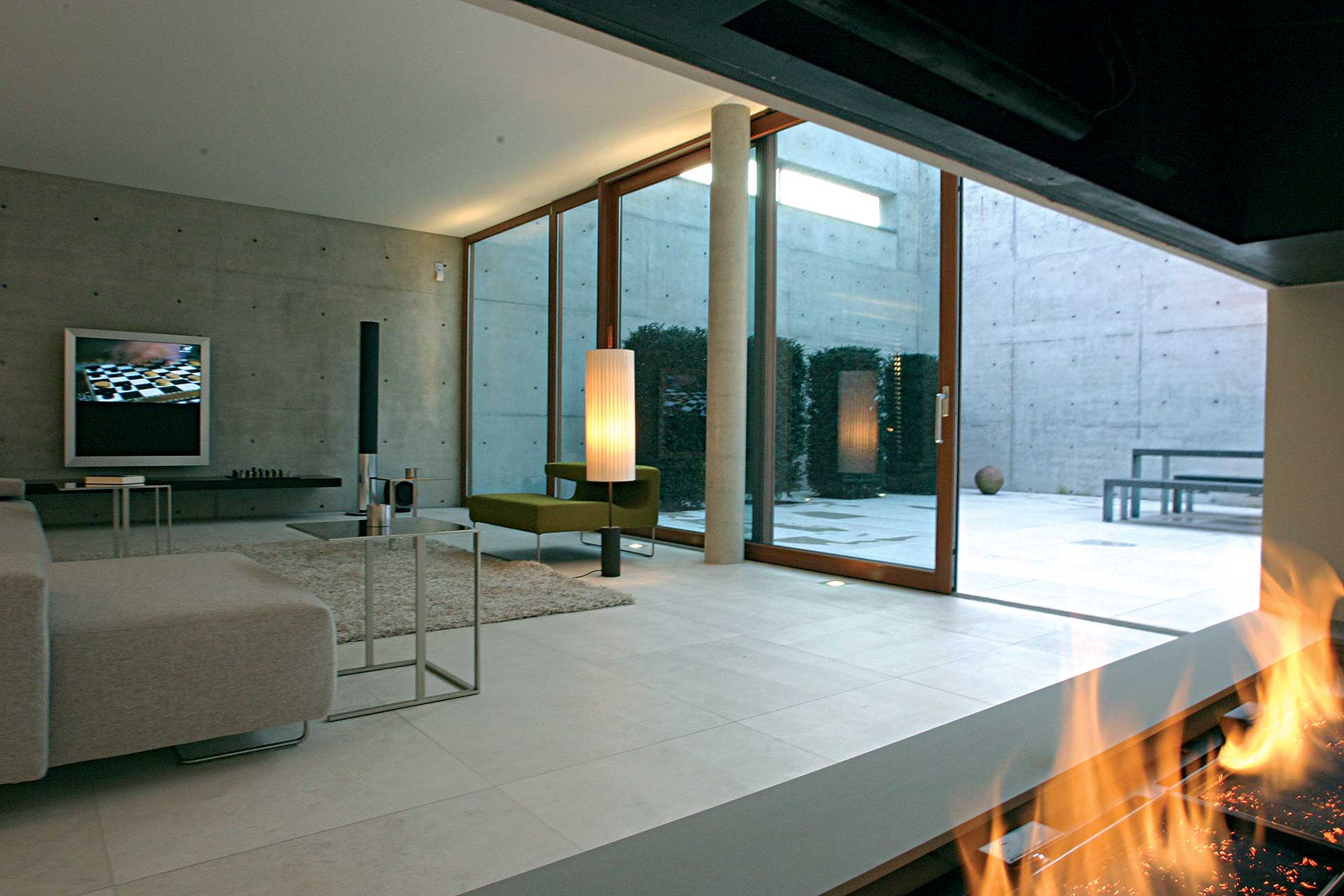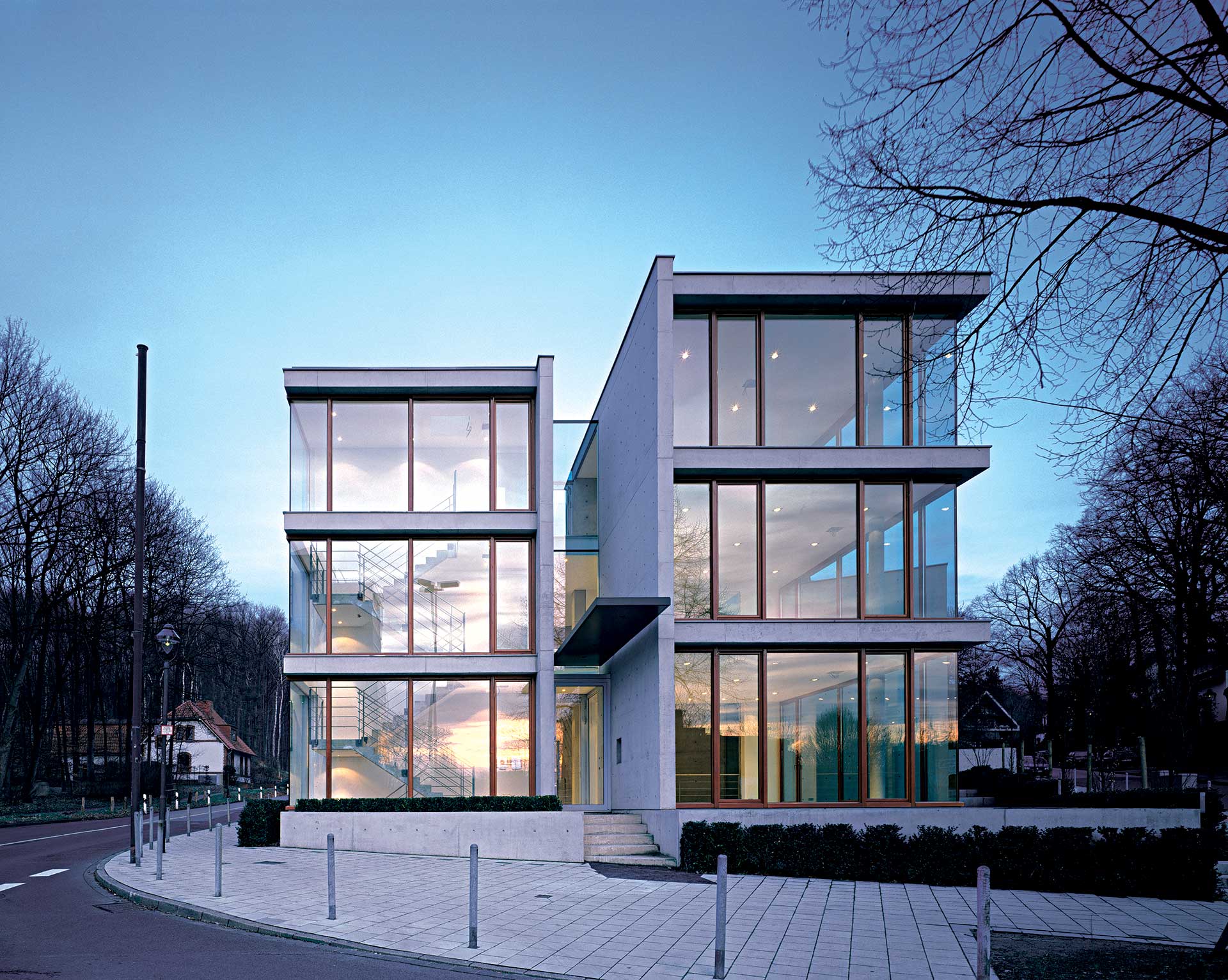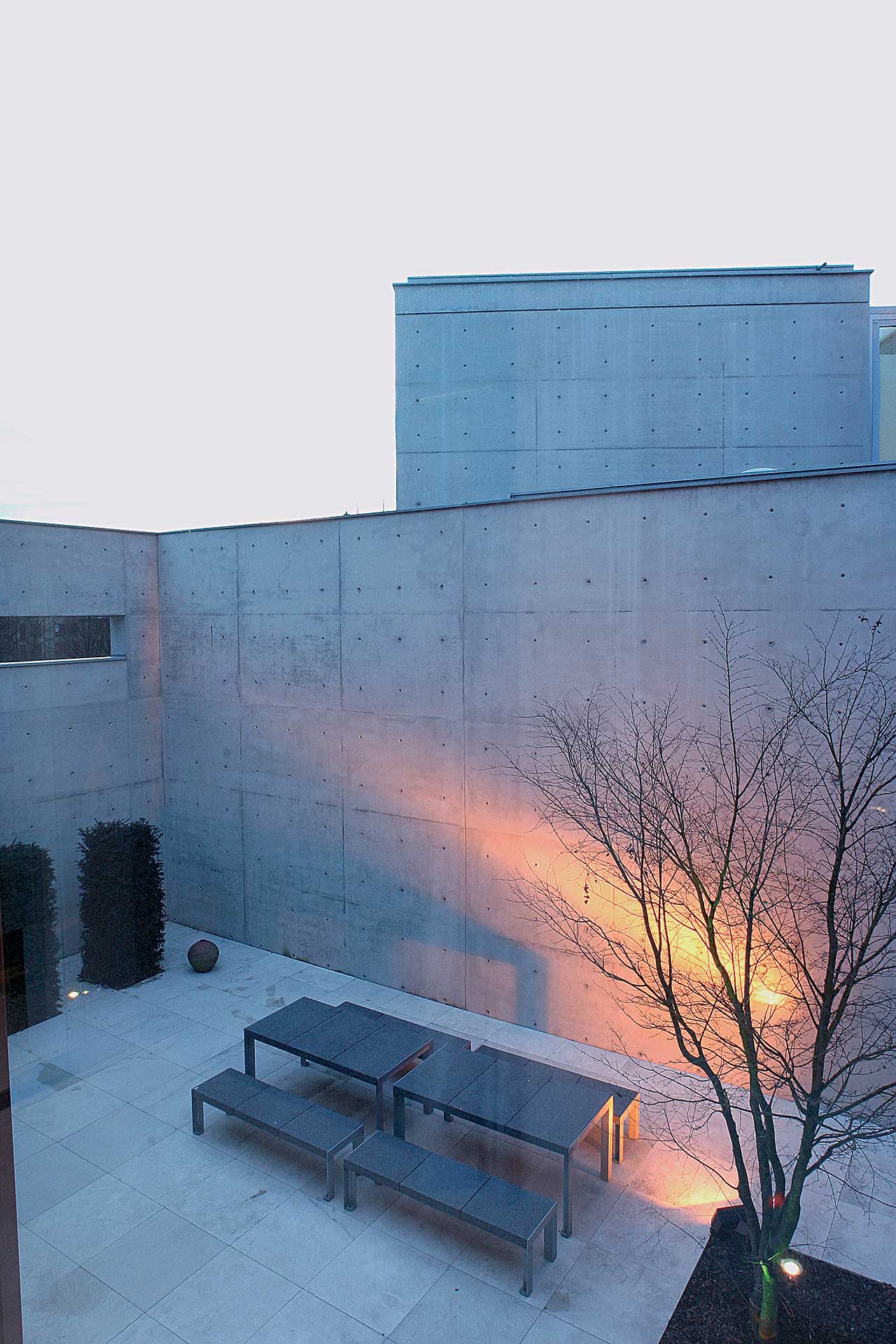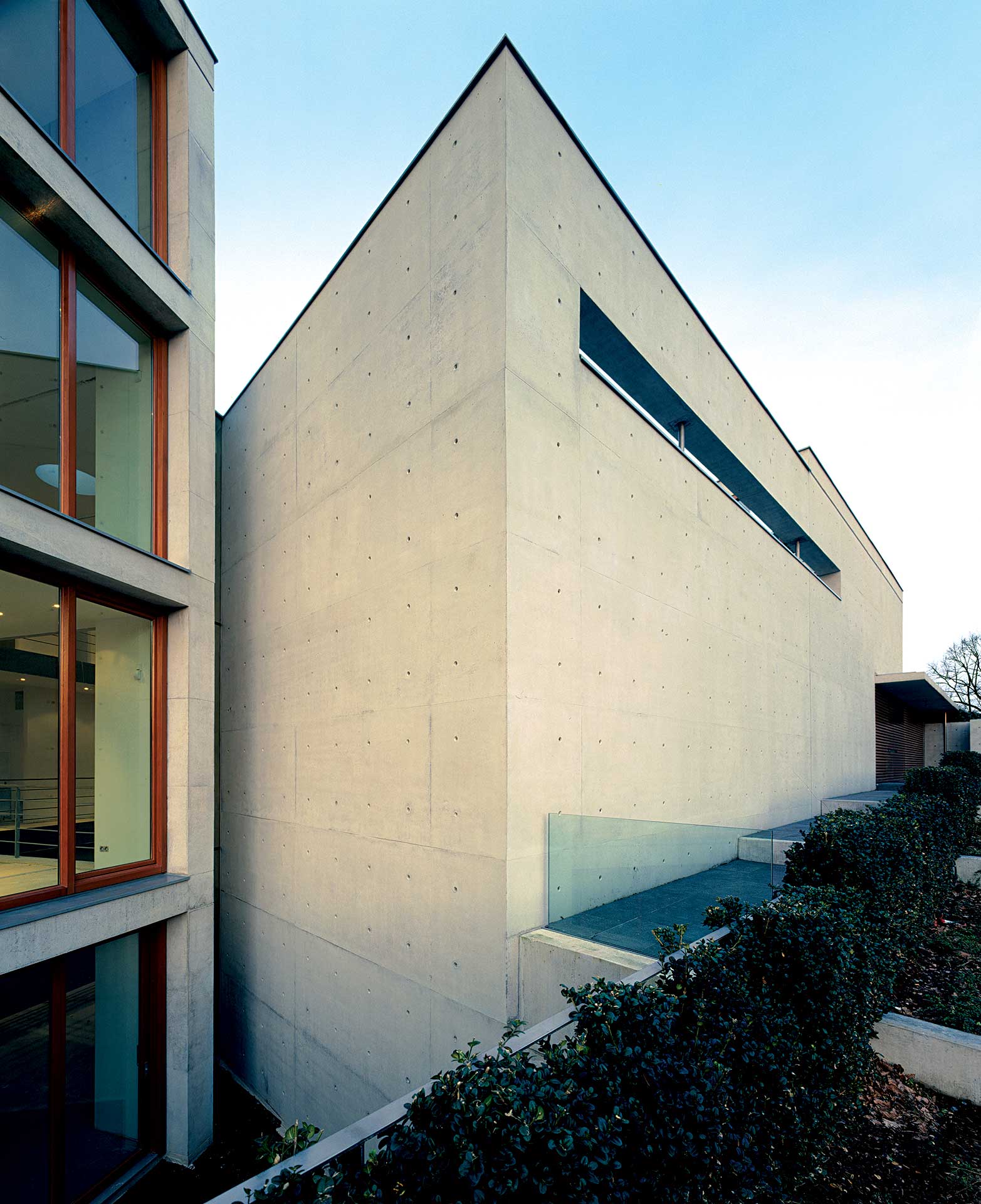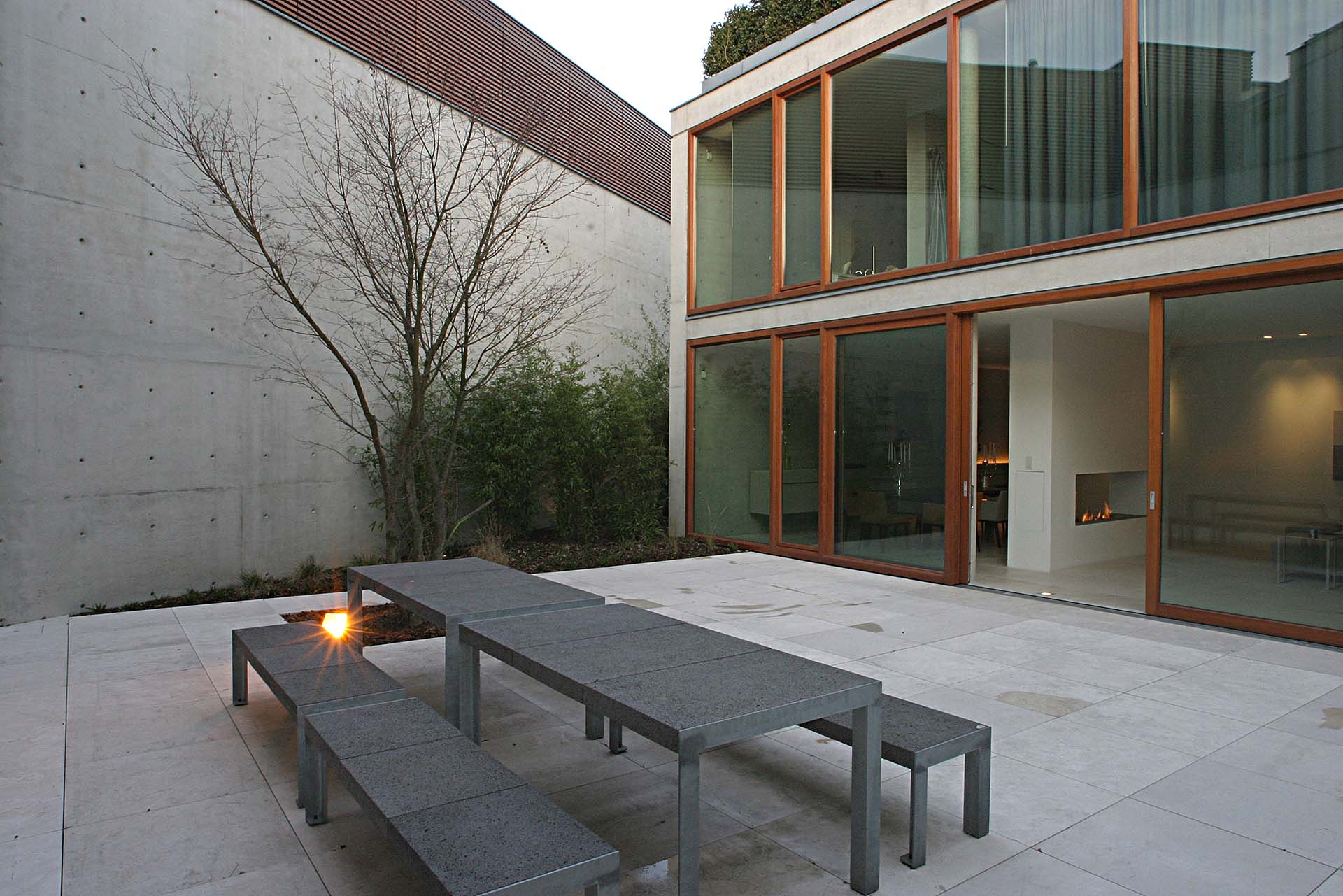The residential buildings and studio ROW 13 were built in a highly exclusive residential area in Düsseldorf, Germany, within spitting distance to the Stadtwald (municipal forest). The assigned address reveals the specific complexity of this estate. The relatively small area of this ensemble has got three postal addresses. The estate is situated at the end of a building tongue and enclosed by three streets. The only way to get the privacy required for the residential buildings was to build courtyards. Southward orientation as well as separation of both residential buildings have been of particular importance. Each of them should get an own sunny courtyard. On account of this the studio has been built in front to protect against noise. Its Northern side toward the street has been glazed.
The other building cubes – parallel to the sidewalk – are twisted toward each other to make the courtyards possible. In order to meet the different requirements, the element of wall has been used as functional and creative means. Here, the wall is closed boundary for private and public areas, there, it is folded into a bearing building wall that merges into a glass façade – where required – to reach visual connection of inside and outside while providing climatic separation. Like a meander it reaches around the estate while changing its function and material. In the narrowest urban space this wall defines internal and external areas, private and public zones and allows or prevents inward and outward views. At the same time the folded wall forms the static backbone of the ensemble, in parts being monolithic and in parts made of double-wall fair-faced concrete while alternating between external and internal zones.
Transparent glass façades in frames from larch form a contrast to massive building cubes thus enabling the interplay of lightness and heaviness of initimacy and openness The transitions from inside to outside should be of the same material and have a self-evident appearance. Determining for the selection of concrete as material to be used was the possibility to avoid the character of a curtain immanent to a façade made of elements. In-situ monolithic concrete gives the building its definite corporality.
The wooden window frame façade made of elements has been mounted flush to the edges of the fair-faced concrete ceiling. For building services purposes, we have to point out the heating and cooling concept of this relatively small building, which is operated with regenerative energies, only.



